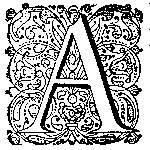A Network of Iconography
Tracing the Evolution of Iconography in History Paintings in the Dutch Golden Age
DOI:
https://doi.org/10.51750/emlc11334Keywords:
digital art history, network analysis, iconography, Rembrandt, art marketAbstract
This article demonstrates how an expanding population of artists in the seventeenth-century Dutch Republic was connected artistically, and how such connections were translated into artistic innovations that fuelled the rapid flourishing of Dutch arts and the art market. It does so by conceptualising and visualising an art-historical network of iconography that, for the first time, connects artists not through social relations but through shared subject matters. Using network analysis, this study revisits the definition of product innovations used by the socio-economic art historian John Michael Montias. It further demonstrates that painters’ choices of subject matter, styles, and qualities were often unrelated while artists’ thematic connections had little to do with their social relations and the location of their residence. Rather, the choices of subject matter were subject to market forces and rooted deeply in an artist’s ability, ambition, and marketing strategy. Lastly, this article visualises the artistic network implied in Rembrandt’s rivals by Eric Jan Sluijter, which helps explain the breakaway success of the Dismissal of Hagar paintings.
Downloads

Published
Issue
Section
License
Copyright (c) 2021 Weixuan Li

This work is licensed under a Creative Commons Attribution-NonCommercial 4.0 International License.





